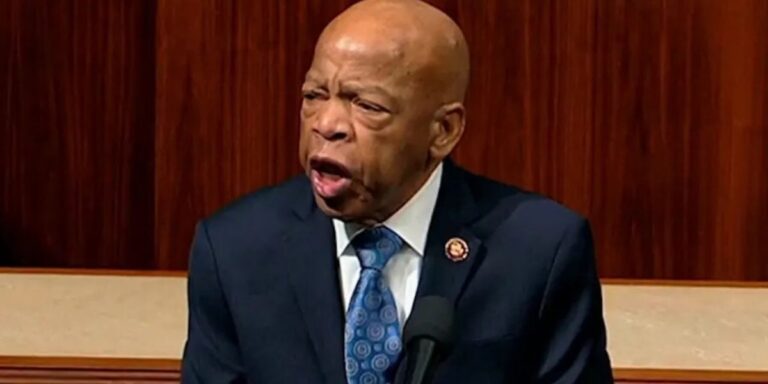The story of John Lewis is one of resilience, courage, and unwavering commitment to civil rights. As a key figure in the American civil rights movement, Lewis dedicated his life to fighting for equality and justice. His timeline reveals significant events and milestones that illustrate his profound impact on society. This article explores the John Lewis timeline, highlighting pivotal moments that defined his journey and legacy.
Early Life and Education
John Lewis was born on February 21, 1940, in Troy, Alabama. Growing up in the segregated South, he experienced firsthand the harsh realities of racial discrimination. Inspired by the teachings of Mahatma Gandhi and the Christian faith, Lewis developed a strong sense of justice and a desire to create change.
In 1957, Lewis graduated from the Troy Institute, a private school, and enrolled at Fisk University in Nashville, Tennessee. It was during his college years that Lewis became actively involved in the civil rights movement, participating in sit-ins and protests against segregated lunch counters. His commitment to nonviolent resistance would define his approach to activism.
The Beginning of Activism
In 1960, Lewis joined the Student Nonviolent Coordinating Committee (SNCC), a key organization in the civil rights movement. He quickly emerged as a leader, advocating for voter registration and civil rights for African Americans. The following year, he played a vital role in organizing the Nashville sit-ins, which aimed to desegregate public spaces.
Lewis’s activism continued to gain momentum, and in 1963, he became one of the youngest speakers at the historic March on Washington. Standing beside Dr. Martin Luther King Jr., he delivered a powerful speech, emphasizing the need for immediate change. This event solidified Lewis’s reputation as a leading voice for justice.
The Freedom Rides
In 1961, Lewis participated in the Freedom Rides, a series of bus trips organized to challenge segregation in interstate travel. The riders, both black and white, faced violent opposition in several Southern states. Lewis, along with fellow activists, endured brutal attacks but remained committed to their cause.
The Freedom Rides were instrumental in raising awareness about the injustices faced by African Americans and highlighted the need for federal intervention. The attention garnered from these events contributed to the eventual passage of civil rights legislation.
Selma to Montgomery Marches
One of the most significant events in Lewis’s life was the Selma to Montgomery marches in 1965. The marches were organized to protest the systematic disenfranchisement of African American voters in the South. On March 7, known as “Bloody Sunday,” Lewis and other marchers were violently confronted by law enforcement as they crossed the Edmund Pettus Bridge.
The brutal images of the attack shocked the nation, prompting widespread outrage and support for the civil rights movement. In the wake of Bloody Sunday, President Lyndon B. Johnson called for the Voting Rights Act, which aimed to eliminate barriers to voting for African Americans.
Political Career
In 1986, after years of activism, John Lewis was elected to the U.S. House of Representatives, representing Georgia’s Fifth Congressional District. As a congressman, Lewis continued to advocate for civil rights, social justice, and equality. He became a prominent voice in Congress, championing issues such as healthcare, education, and economic opportunity for marginalized communities.
Lewis’s political career was marked by his dedication to public service and his commitment to uplifting the voices of the underserved. He was known for his ability to bridge divides and build coalitions across party lines, emphasizing the importance of unity in the pursuit of justice.
Legacy and Impact
John Lewis passed away on July 17, 2020, leaving behind a profound legacy that continues to inspire generations. His contributions to the civil rights movement and his unwavering commitment to justice serve as a guiding light for those who seek to create positive change.
Lewis’s famous quote, “Good trouble, necessary trouble,” resonates with activists and advocates for social justice today. His life reminds us that the fight for equality is ongoing and that each of us has a role to play in making the world a better place.
Conclusion
The John Lewis timeline is a testament to the power of courage, determination, and unwavering commitment to justice. From his early years in Alabama to his impactful political career, Lewis’s life exemplifies the spirit of activism and the ongoing struggle for civil rights. As we reflect on his journey, we are reminded of the importance of standing up for what is right and the legacy we can create through our actions.
FAQs
What were John Lewis’s main contributions to the civil rights movement?
John Lewis played a pivotal role in various civil rights activities, including the Nashville sit-ins, the Freedom Rides, and the Selma to Montgomery marches. His leadership and advocacy for nonviolent resistance significantly impacted the movement and led to key legislative changes.
Why is the Selma to Montgomery march significant?
The Selma to Montgomery march, particularly “Bloody Sunday,” highlighted the brutality faced by civil rights activists and garnered national attention. The events led to the passage of the Voting Rights Act of 1965, which aimed to eliminate barriers to voting for African Americans.
How did John Lewis’s early life influence his activism?
Growing up in a segregated South, Lewis experienced racial discrimination firsthand. His strong Christian faith and the teachings of Gandhi inspired his commitment to nonviolent resistance and social justice, shaping his approach to activism.
What was John Lewis’s role in Congress?
As a member of Congress, John Lewis continued to advocate for civil rights and social justice issues, focusing on healthcare, education, and economic opportunity for marginalized communities. He was known for his ability to build coalitions and work across party lines.
What is the legacy of John Lewis?
John Lewis’s legacy is one of courage, resilience, and unwavering commitment to justice. His famous phrase, “Good trouble, necessary trouble,” continues to inspire activists and advocates for social justice today, reminding us that the fight for equality is ongoing.

